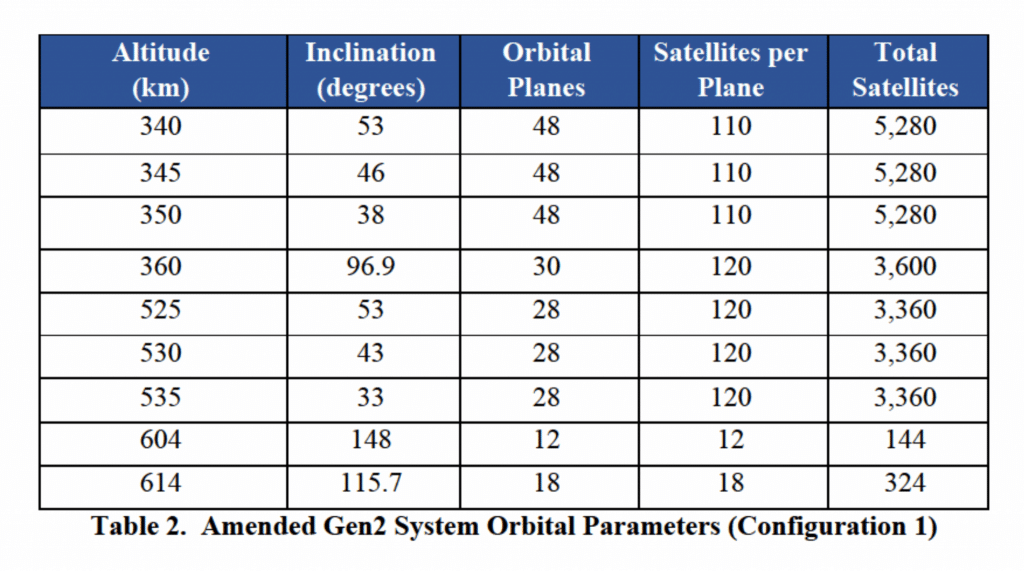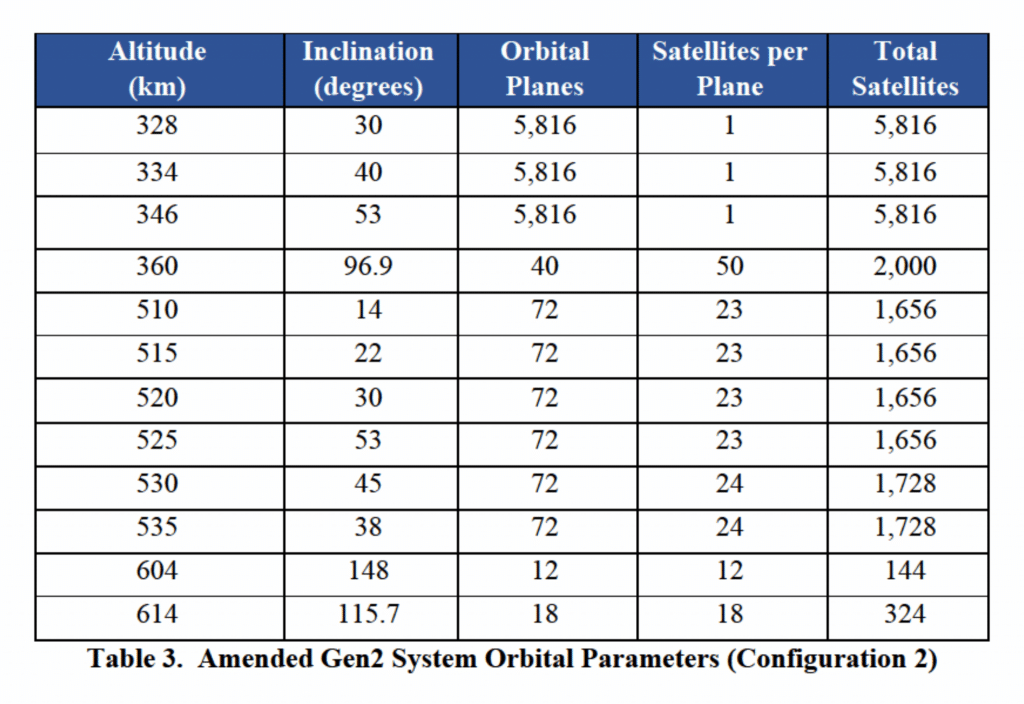SpaceX has submitted an FCC application modifying what it calls Starlinks Generation 2 (Gen2) constellation and laying out plans to launch some 30,000 new satellites with its fully reusable Starship rocket.
SpaceX’s latest Starlink Gen2 modification request comes more than a year after the company first submitted an application for an FCC license for the launch of some 30,000 next-generation satellites and almost two years after SpaceX first officially floated the idea in October 2019. Now, some 18 months after kicking off significant Starlink Gen2 constellation and satellite design work, SpaceX has significantly modified its previous request and the design of the constellation to better adapt to the potential of Starship and the connectivity needs of the world.
Thanks to a number of details included in SpaceX’s modified Starlink Gen2 application, it’s possible to paint a fairly detailed picture of what the future constellation might look like. First and foremost, in its modification, SpaceX included two possible constellation “configurations”: one where Starship is ready for regular orbital launches in the near term and one in which Starlink Gen2 satellites are ready for flight before the next-generation rocket.
In the former configuration, Starship would launch virtually all Starlink Gen2 satellites. In the former, SpaceX would supplement Starship’s availability with Gen2 Falcon 9 launches. All told, both configurations max out around 29,990 Gen2 (2.0, V2.0, etc) Starlink satellites. It’s not entirely clear but it appears that both Config 1 and Config 2 constellations would rely on the same Gen2 satellite design, which SpaceX says will be significantly larger and more powerful than existing Starlink V1.0 satellites, which weigh approximately 260 kg (~570 lb) each, produce ~3 kW of solar power, and have a maximum bandwidth of ~18 gigabits per second (Gbps).


In contrast, Starlink Gen2 satellites, which SpaceX says Starship will launch on a single ‘plane’ basis (meaning one plane per launch), appear to be several times larger. Assuming Starship is capable of launching 100-150 tons (~220,000-330,000 lb) to the low Earth orbits Starlink Gen2 is targeting, each Starship will launch up to 120 satellites – each weighing approximately 850-1250 kg. SpaceX’s original June 2020 Gen2 filing implied that the next generation of Starlink satellites would have up to three times the maximum bandwidth of existing V1.0 satellites (~50+ Gbps). In its modified August 2021 Gen2 filing, SpaceX says those satellites will be even more capable, still.
In other words, SpaceX seems to be implying that future Starlink satellites will likely weigh around one ton (~2200 lb) each, be capable of a maximum individual bandwidth of some 60-80 Gbps, and have solar arrays capable of supplying something like 15-20 kilowatts to power an army of antennas. If SpaceX ultimately wins FCC approval, the ~30,000 satellite Starlink Gen2 constellation as proposed would have a total instantaneous bandwidth of at least 500 terabits per second (Tbps) over land (~1800 Tbps including ocean coverage). As of 2020, the total installed bandwidth of global internet infrastructure was estimated to be 600 Tbps.





